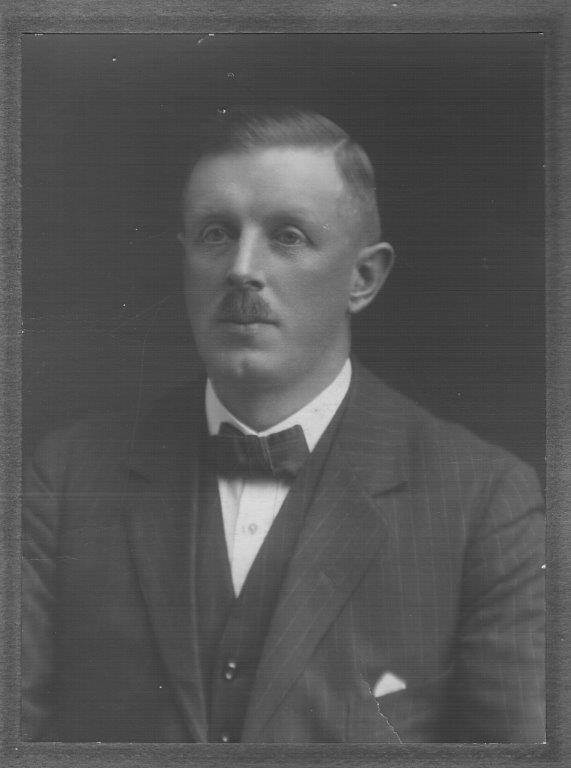Great War Dundee
This is Dundee's story of those that served in the First World War, and of the people left at home
We need you to tell us more about the life and times of David Murray Kennedy Johnston
David Murray Kennedy Johnston
Military Information
- Date of enlistment: 29.01.1916
- Place of enlistment:
- Service no: 73167
- Rank: Gunner
- Service Occupation:
- Awards:
- Regiment/Service: Royal Garrison Artillery
- Unit/Ship:
Personal Information
- Date of Birth: 16.11.1879
- Place of Birth: Balgray, Dundee
- Address:
- Occupation: Farmer
- Mother:
Charlotte Johnston, (nee Kennedy) Balgray Mains, Dundee
- Father:
John Johnston, Balgray Mains, Dundee
- Siblings:
John, born 1881, Peachy, born 1887, Walter, born 1888, & Francis, born 1893, James, William, Charlotte, Helen (Nellie) & Catherine (Kitty)
- Spouse:
Jessie Jane Thom
- Children:
Violet & Jessie
- Age at Death:
- Date of Death: 22.02.1944
- Place of Death: Cunmont by Dundee
- Burial Country:
- Cemetery:
More about David Murray Kennedy Johnston
David was one of seven brothers, five of whom served in the armed forces during the Great War, Peachy and John survived and Francis and Walter both died. James and William did not serve in the armed forces.
He was educated at Harris Academy and Morgan Academy, Dundee. After school, David joined his father in the family auctioneering firm of Marshall & Johnston. David had joined the local Volunteer Force, The Fife and Forfar Yeomanry about 1904, but he seems to have declined to transfer to the Territorial Forces when the ‘Volunteers’ were disbanded and reformed under the ‘Haldane Reforms’ as the ‘Territorial Army’ in 1908.
Of the five brothers, only David’s war records survive and from them we know that he enlisted in the Royal Garrison Artillery on the 29th January 1916 as a Gunner, regimental no. 73167. He reported for training on the 9th March 1916 at No 3 Depot RGA at the Citadel, Plymouth. No 3 Depot RGA was responsible for all the coastal artillery defences of south-west England and Wales. He was from there posted to 44 Coy. Coastal Artillery at Pembroke Dock. On the 3rd May 1916 he was posted to 137 SB R.G.A. formed that day at Pembroke Dock. He was posted with this unit to the B.E.F. on the Western Front as part of the 80 Brigade RGA which was attached to Henry Plumer’s 2nd Army. He embarked with them from Southampton on the 13th August 1916, arriving at Le Havre the following day. From his records, we know he was home for a short leave from the 6th to the 16th of October 1917. He seems to have been hospitalised in France from 27/10/1917 (the 2nd day of the 2nd Battle of Passchendaele) to 22/12/1917 and the army stopped his pay for 51 days. We do not know why he was hospitalised, but we think he was gassed. While he was hospitalised, his unit 137 SB was transferred to the Italian Front. On regaining ‘physical efficiency’ as the army put it, David was posted ‘from base’ to 286 SB R.G.A. in France on 31st December 1917. He was temporarily assigned in the field to 155 SB R.G.A. also attached to the 77 Brigade R.G.A. on 29th April 1918, returning to his own unit, 286 SB on the 6th May 1918.
David was captured at the Second Battle of the Aisne in Champagne (often known as the Chemin des Dames Offensive) which was the third attack of the German Spring offensive or Kaiserslacht of 1918. He was reported missing on the 27th May 1918 and was captured and held as a P.O.W. The family at Balgray were notified that he was missing by army form B104 -83 dated 24th June and received the further news that he was well but a POW, by a postcard written by him dated 17/6/18. The card says he was ‘taken’ at Pontavert, 27/7/1918 and ‘received’ at Crossen. This card was received by the family, forwarded by the Red Cross at Geneva in the second week of August 1918.
Our understanding is that David served as a signaller and we might speculate that he survived because he was with his officers in some sort of protected battery HQ bunker. David’s office training, neat handwriting and auctioneer’s quick ability with numbers would have been valuable skills in artillery and were no doubt why he was selected to be a signaller. Possibly he had some sort of role in collating information from Brigade HQ and from observation posts and was manning a telephone in an HQ bunker when the German attack opened.
Army documents relating to David, show the name of the POW camp but the writing is difficult to read. However access to his Prisoner of War records held by the Red Cross in Geneva, confirm that he was ‘’taken at Pontavert’’ and ‘’received at Crossen’’. The Crossen POW Camp was in the province of Brandenberg on a loop in the River Oder and was then in Prussia and is now in Poland and known as Krosno Odrzanski. He was eventually repatriated at Leith on the 13th December 1918.
Following his return from War, David ran the family auction firm and then succeeded his brother James as farmer at Cunmont.
Information & photo’s kindly supplied by David’s grandson, Douglas Norrie.
Can you tell us more about David Murray Kennedy Johnston'? Some additional facts, a small story handed down through the family or perhaps a picture or an heirloom you can share online. Contact our curator...

